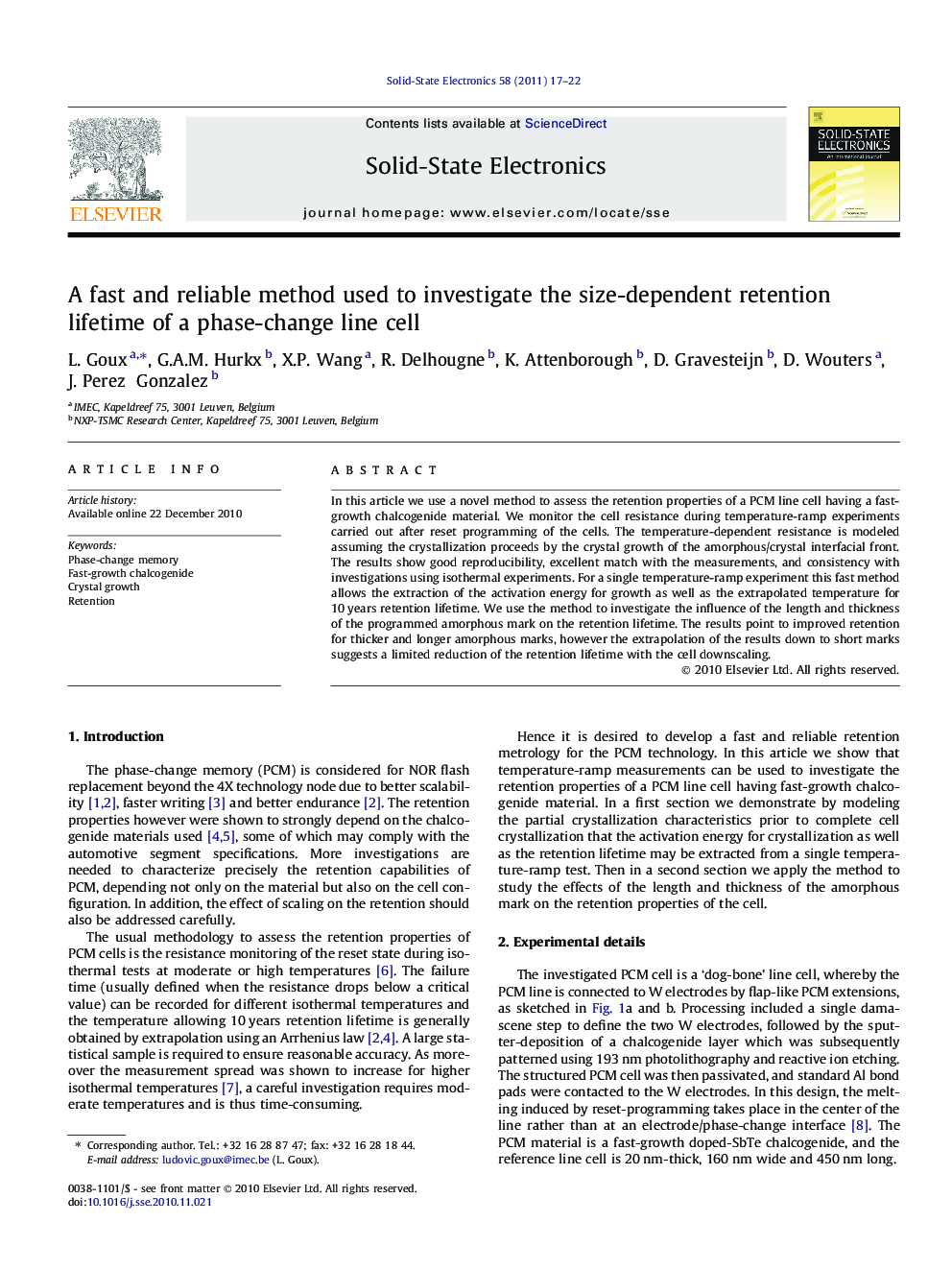| Article ID | Journal | Published Year | Pages | File Type |
|---|---|---|---|---|
| 747162 | Solid-State Electronics | 2011 | 6 Pages |
In this article we use a novel method to assess the retention properties of a PCM line cell having a fast-growth chalcogenide material. We monitor the cell resistance during temperature-ramp experiments carried out after reset programming of the cells. The temperature-dependent resistance is modeled assuming the crystallization proceeds by the crystal growth of the amorphous/crystal interfacial front. The results show good reproducibility, excellent match with the measurements, and consistency with investigations using isothermal experiments. For a single temperature-ramp experiment this fast method allows the extraction of the activation energy for growth as well as the extrapolated temperature for 10 years retention lifetime. We use the method to investigate the influence of the length and thickness of the programmed amorphous mark on the retention lifetime. The results point to improved retention for thicker and longer amorphous marks, however the extrapolation of the results down to short marks suggests a limited reduction of the retention lifetime with the cell downscaling.
Research highlights► We model the temperature-dependent resistance of a fast-growth phase-change cell. ► We obtain excellent match assuming crystal growth from the amorphous/crystal front. ► A single temperature ramp allows the extraction of retention characteristics. ► Using this method we predict a limited lifetime reduction with cell downscaling.
